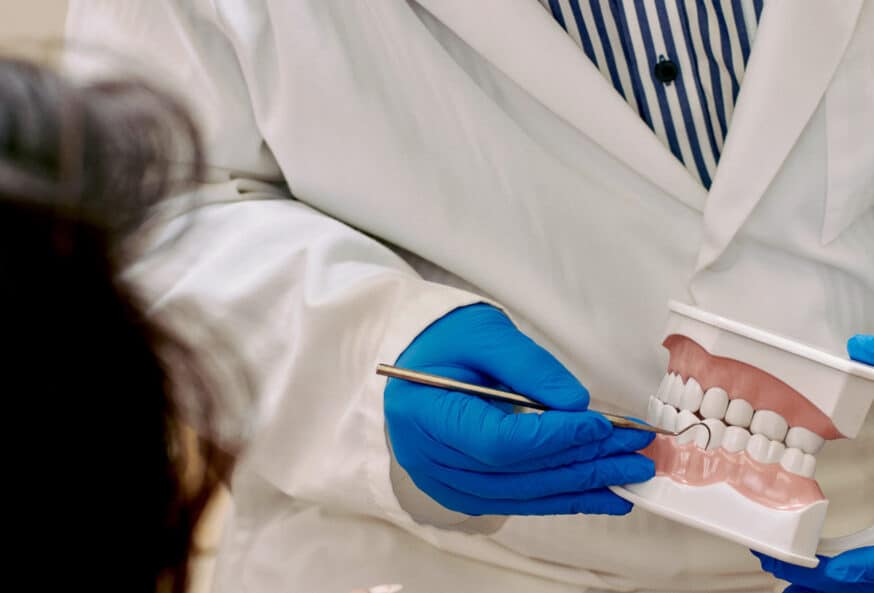Dental implants can be restorative and even life-changing solutions for dental patients. They can rehabilitate chewing ability, facilitate facial prostheses, and grant invaluable confidence to our patients.
While this dental solution is an innovative way to refresh a patient’s smile, the conventional treatment is not free of inherent flaws. As a dental professional, you’ve likely seen one or several dental implant complications that can arise—and even lead to implant failure.
Fortunately, the adoption of digital dentistry can proactively neutralize many of the intrinsic problems that dental implants can cause.
Today, we’ll show you how.
What are the common dental implant problems?
According to the American Academy of Implant Dentistry, approximately 3 million people in the United States receive 5.5 million implants annually—a number that continues to grow by 500,000 per year.
Although it has become a popular form of treatment for missing teeth, still, complications can and do occur. To that end, common dental implant problems include:
- Loose implants – The most common dental implant complication is that the implant loosens post-surgery, requiring additional treatment later on.
- Bleeding in the implant site – In some instances, the implant can cause chronic bleeding that won’t stop without medical intervention, which can cause a host of other issues.
- Infection – Some oral implants become infected immediately after the implant surgery. A dental implant infection can cause pain, fever, slower healing, or even prevent the implant from fusing with mouth and gum tissue.
- Nerve damage – Sometimes, drilling or compression during implementation can injure the nerves. This can result in potential long-term nerve damage, which can, in turn, contribute to several other oral health problems.
- Sinus issues – In rare cases, if an implant is affixed to the upper jaw bone, it could contribute to subsequent sinus issues like a deviated septum, chronic infection, or sinusitis.
- Damage to neighboring tissue – A dental implant can damage blood vessels, teeth, or tissue in the immediate proximity of the surgical site if the emergence profile isn’t ideal.
- Micro-movement – Implants can shift slightly, which is an indicator that they may become loose in the future.
- Implant failure – An implant may completely fail for one of several reasons, including:
- Lack of osseointegration during the healing process
- Peri-implant tissue infection
- Breakage
Let’s drill deeper into dental implant failure and a few common causes.
Why do dental implants sometimes fail?
The blame for implant failure tends to be multifactorial—as various issues compound atop one another. Some are preventable, while other factors, like genetics, are largely unavoidable.
Researchers discovered that the most common cause of dental implant failure includes one or more of the following issues:
Host-related
- Age
- Sex
- Smoking habits
- Systemic disease
- Oral hygiene
Site-related
- Position in arch
- Quality of bone
- Quantity of bone
Surgery-related
- Initial stability
- Angulation of implant
- Direction of implant
- Skill of oral surgeon
Implant-fixture-related
- Surface roughness
- Length of dental implant
- Diameter of dental implant
- Macros and microstructure of implant fixture
Implant prosthesis-related
- Type of prosthesis
- Retention method
- Occlusal scheme
How does digital dentistry prevent implant issues?
The evolution of dental surgical methodologies and the integration of digital dental technologies have both dramatically impacted implant success rates for the better.
As a result, the field of cosmetic dentistry is fundamentally changing.
In particular, three advancements in dentistry are shaking up the industry, making implant procedures easier, faster, and more successful:
#1 The Intraoral Scanner
Intraoral scanners are the vanguard of the digital dental revolution—the most important device dentists can leverage to increase implant success rates.
Outfitted with these tools, a dentist has an alternative to dental impressions taken the conventional way, which is a process that’s uncomfortable for patients, time-consuming, and prone to error. Instead, with just a quick scan, the device can catalog the size and shape of each tooth, using that data to render a flawless 3D image.
For dentists, this improves the dental implant procedure by reducing patient chair time, improving the patient experience, saving money on wasted supplies, and creating more accurate impressions. That final advantage is the most important: the more accurate the impression, the more likely the implant will fit perfectly without future complications.
With Dandy’s intraoral scanner, you can digitize the entire model-making workflow, shortening a process that used to require several appointments into just two.
#2 CAD/CAM Technology
The next tool that reinforces the dental implant process involves computer-aided design and manufacturing, or CAD/CAM dentistry technology, which plays an essential role in the creation of detailed, accurate restorations.
Upon receiving the intraoral scan rendering, the CAD design team can make small adjustments to ensure proper spacing and alignment of the implant prior to final restoration.
#3 3D Printing Technology
Once the scan is ready for restoration, a milling machine shapes the piece out of a ceramic block, and then color matches it. This automated process ensures that the final restoration is as accurate and form-fitting as possible, which reduces the chance of implant-fixture-related complications.
Dandy’s digital dental implant process
Most dental implants are successful. But not all of them. Complications can arise, especially when dentists rely on outmoded tools and methods.
For dental clinics, digital technologies can transform the entire implant workflow, making it more efficient, patient-friendly, and precise. With tools like Dandy’s intraoral scanner and digital dental lab process, you can proactively combat many of the inherent issues that contribute to dental implant problems.
Contact us today to start your journey.
Sources:
ADA. ADA Marketplace. https://www.mouthhealthy.org/en/all-topics-a-z/bridges#:~:text=Unlike%20a%20removable%20bridge%2C%20which,success%20depends%20on%20the%20foundation.
NCBI. Pain Management for Nerve Injury following Dental Implant Surgery at Tokyo Dental College Hospital. https://www.ncbi.nlm.nih.gov/pmc/articles/PMC3413988/
NCBI. Factors Affecting the Survival Rate of Dental Implants: A Retrospective Study. https://www.ncbi.nlm.nih.gov/pmc/articles/PMC5774056/



